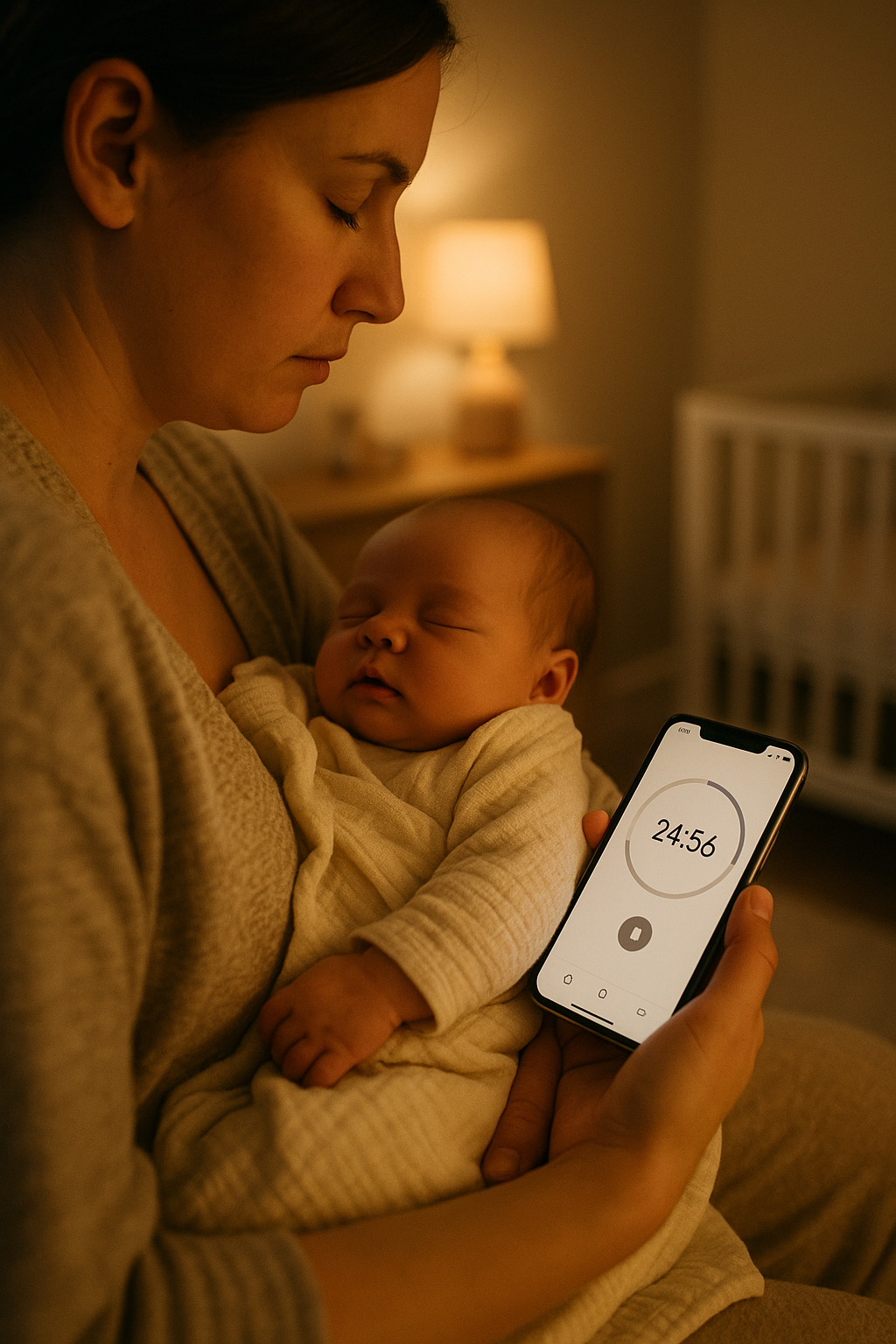Reading Baby Hunger Cues Like a Pro — Signs Before the Cry
4 min read1,005 words

Reading Baby Hunger Cues Like a Pro — Signs Before the Cry
Knowing when your baby is hungry doesn’t have to be a guessing game. With a little observation and the right habits, you can catch the signs early — making feeds calmer for both of you. This guide shows the most common cues (with visuals) and how to use them to build a rhythm that feels human, not clock‑driven.
Why Hunger Cues Matter
Newborns communicate in whispers long before they cry. Crying is a late hunger cue — and by then, your baby is already upset, which can make latching and calming harder. Catching the earlier cues keeps the moment soft and the latch easier.
Spot early signs and you’ll often notice feeds start smoothly, your baby settles quicker, and you feel more confident. It also helps you learn your baby’s natural rhythm rather than relying on rigid schedules.
For a personal story of learning to spot signals before the cry, see How I Knew My Baby Was Hungry.
Early, Mid, and Late Hunger Cues (with images)
Every baby has their own way of saying “I’m hungry,” but cues generally fall into three stages. The visual cards below show common examples. On small screens, each image stacks full‑width for clarity.

Early cue: Hand-to-mouth
Gentle hand or fist drifting toward the mouth; a quiet “I’m getting hungry” signal.

Early cue: Rooting
Head turns toward touch; lips part or seek — a calm, ready-to-feed sign.

Early cue: Lip smacking
Soft mouth movements or sucking motions — often the first thing you’ll notice.

Mid cue: Restless wiggles
Body becomes more active; little stretches, rooting increases, small vocal sounds.

Pattern: Cue clusters
Evening bouts of frequent cues and short feeds are common and normal.

Late cue: Crying
Tense body, louder sounds. Feeding now may take longer to calm. Aim to start before this stage.
Recognising early cues lets you begin while your baby is still calm. Feeding tends to be smoother, and both of you can relax into it. For the mental clarity side of this, read How Logging Feeds Gave Me Peace of Mind.
The Myth of “Every X Hours”
You might hear “feed every three hours,” but babies aren’t timetables. Growth spurts, leaps, and comfort needs all shift how often they want to feed. Rigid schedules can create stress when your baby’s body is asking for something different.
Instead of watching the clock, watch your baby. Cues tell the real story — and over time, you’ll see their unique rhythm appear. A simple timer helps you see intervals and patterns without pressure.
See a practical breakdown in Why Use a Baby Timer App?.
Practical Ways to Learn Your Baby’s Signals
- Observe first: Spend the first minute noticing mouth, hands, and eyes before you latch — you’ll start to see a pattern.
- Log the cue + time: Note “hand‑to‑mouth 10:12” or “rooting 13:45.” Simple entries beat memory every time.
- Compare with last feed: Over days, you’ll see rough intervals where cues reappear.
- Share the language: Tell your partner/caregiver what you’re seeing so they can respond early too.
- Use calm routines: Dim lights, bring water, settle your shoulders before starting — your body’s calm helps your baby’s.
Tracking cues alongside feeds gives you clarity without turning parenting into a spreadsheet. It’s a tiny habit that pays off most when you’re tired.
How Cues Change Over Time
In the first weeks, signals are subtle — soft mouth movements, drowsy rooting, hands drifting to the face. By two to three months, head turning is stronger, body movements are clearer, and you might hear different vocal tones before crying.
During growth spurts, expect more frequent cues and shorter gaps — entirely normal and often a sign of healthy development. Think of it as your baby “asking for more practice.” We wrote about the feeling of those nights in The First Growth Spurt: How We Danced Through the Long Nights.
Evening “Cue Clusters” (and how to stay calm)
Many parents see evening cue clusters: frequent small feeds and lots of “I need you” signals. It’s not a failure — it’s a pattern. Your timer helps you see that you are feeding enough, even when it’s many short sessions rather than a single long one.
Plan for evenings like a gentle routine: comfy chair, water within reach, something warm to drink, and your phone within one tap. If you’re heading out, the app’s “time since last” + average interval gives you confidence to time a short errand or stroll. For a story on taking that calm into the supermarket, see Freedom in the Aisles.
When in Doubt, Offer the Breast
Sometimes you won’t be sure if it’s hunger or comfort. Offering the breast (or bottle) when in doubt won’t harm your baby — and it often brings quick relief. If they’re not hungry, they’ll usually show you. If they are, you’ve responded early and kindly.
The more you practice reading cues, the more you’ll trust your instincts. Over time, it feels like a conversation without words — you speak through your arms and presence; your baby answers with their breath and ease.
Putting It All Together
Start simple: notice one cue this week and log it next to the feed. Watch how often it shows up before the cry. Then add a second cue. Patterns emerge quickly when you aren’t asking your tired brain to remember everything.
If you like, keep a tiny note like “rooting + hand‑to‑mouth → latch was calmer.” Those small reflections build your confidence. And the next time you’re out and your baby stirs, a two‑second glance at “time since last feed” can be the difference between panic and a peaceful plan.
For a broader overview of how timing and patterns reduce stress, visit Why Use a Baby Timer App? and the round‑up The Complete Guide to Baby Feeding Apps.
Breast Feeding Timer – Coming Soon
One-tap start and stop for left and right feeds, clear timers, and daily stats — designed for those quiet hours when every second counts.
Download Breast Feeding Timer App NowLast updated: 22 August 2025 at 08:17
Continue reading

18 Aug 2025
Why I Started a Feeding Log and Never Looked Back
I didn’t start logging feeds to be perfect — I started so I could stop guessing. Here’s how a simple feeding log changed my days (and nights).

13 Aug 2025
Why Use a Baby Timer App? Track Feeding Times and Build Calm Routines
From tracking left/right sides to spotting feeding patterns — a baby timer app remembers the details so you can focus on your baby.

13 Aug 2025
Free Baby Feeding App — Calm in Your Pocket
From late-night feeds to peaceful outings — how a free baby feeding app can hold the details so you can hold your baby.
Explore Expert Videos
Prefer watching? Browse our curated, doctor-led videos on key topics like breastfeeding, hunger cues, and routines.
Browse Videos